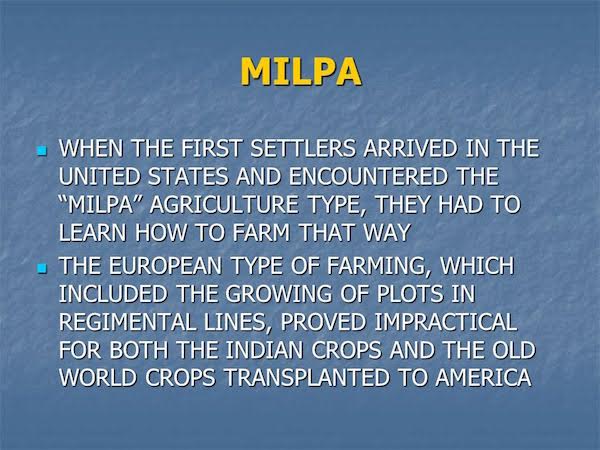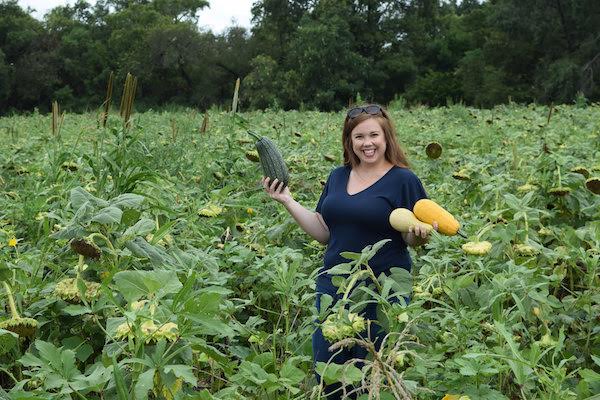Farmers have always helped their neighbors when needed and now some are putting acres towards helping out their communities after seeing long lines outside local food pantries and empty shelves at the stores as a result of the pandemic.
There is a small but growing movement including several large row croppers who are not only bridging the huge gap between themselves and consumers but also trying to do some extra good by donating produce that is harvested from their “Milpa acres”.
Definition of Milpa Acres: A milpa is a field in which farmers plant a dozen crops at once including corn, avocados, multiple varieties of squash and bean, melon, tomatoes, chilis, sweet potato, etc. Milpa crops are nutritionally and environmentally complementary. Corn lacks the amino acids, lysine, and tryptophan which the body needs to make proteins and niacin, but the beans have both lysine and tryptophan. The Squashes, for their part, provide an array of vitamins; avocados, fats, etc. The milpa, in the estimation of H. Garrison Wilkes, a corn researcher at the University of Massachusetts in Boston, “is one of the most successful human inventions ever created.”
Tom Cannon, who operates 10,000 acres of crops and cattle near Blackwell, Oklahoma, was already getting hit hard from the trade war battles, then the effects of COVID-19 on the food supply chain led him to make the move to Milpa and help out those needing a meal. I found one of his comments interesting, where he mentioned that even farmers are dependent on our fragile food system and a lot of them are only four days away from hunger, not something we often think about. As a result, Cannon decided to start growing a variety of fruits and vegetables for local consumption. It’s the perfect way for a commodity farmer to grow produce without changing farming practices. I’m told you can just load the drill with 50 plus species and don’t ever have to go back until it is time to harvest, which most times you don’t even do yourself.
From what I understand, most of these Milpa plots not only put food on the grower’s plates but most of the 4,000 plus pounds of produce each acre delivers get donated to local community groups like food banks, youth groups, and churches. All they have to do is agree to do the harvesting. When that’s finished, the rest serves as green manure for the field. Keep in mind, so far most of the growers who are stepping up are also committed regenerative farmers who are already on board with the benefits beyond the ease of planting which include crowding out weeds, encouraging beneficial insects, and increasing soil moisture retention.
We read an article the other day in Successful Farming that told about Sedgwick, Kansas, farmer Ryan Speer and his wife, Jennifer, who have planted a Milpa Gardens for three years. The Speers have harvested tons of produce, giving it not only to the Food and Farm Council, but to the Salvation Army, women’s shelters, and employees of the Newton, Kansas, hospital where Jennifer works. They pick three times a week, two hours per night harvesting, putting the food in laundry baskets, filling five to six laundry baskets full of vegetables every few days. The Speers grow a few rows of sweet corn separately in a cornfield, and add those ears to the baskets, while Jennifer provides recipes on how to fix meals with these vegetables. Read their full story HERE.
Some growers may not like a field that doesn’t have straight rows but for the locals, it adds a new experience to acquiring your food as it’s more of a scavenger hunt, where you have to navigate through the cover, never exactly knowing when you’re going to run across that watermelon you crave. Cannon says one of the greatest joys he receives is the sounds of delight that come from his fields, as children and adults finally happen upon what they are looking for. It seems like harvesting a Milpa unleashes the inner forager in everyone.
Over the past three years, Milpa mix has been slowly gaining popularity and according to Keith Berns, co-owner of Green Cover Seed in Bladen, Nebraska, who helped formulate the first seed mixes, the number of orders suddenly doubled this spring. Berns who currently is donating a free acre of seed to anyone who commits to donating the harvest, is also thinking much bigger. With 200 million acres planted with corn, soy, and wheat in the U.S., Berns says if every producer just dedicated a fractional percentage of their land to a Milpa garden, it could result in a massive increase in national vegetable production. Keep in mind, farming regions across the U.S. may be growing plenty of crops, but rural communities have long had limited access to nutrient-rich fresh food, and this could be a great win-win. Something to think about and consider if you are looking for ways to help your community. (Source: CivilEats, KansasRuralCenter; SuccessfulFarming)










